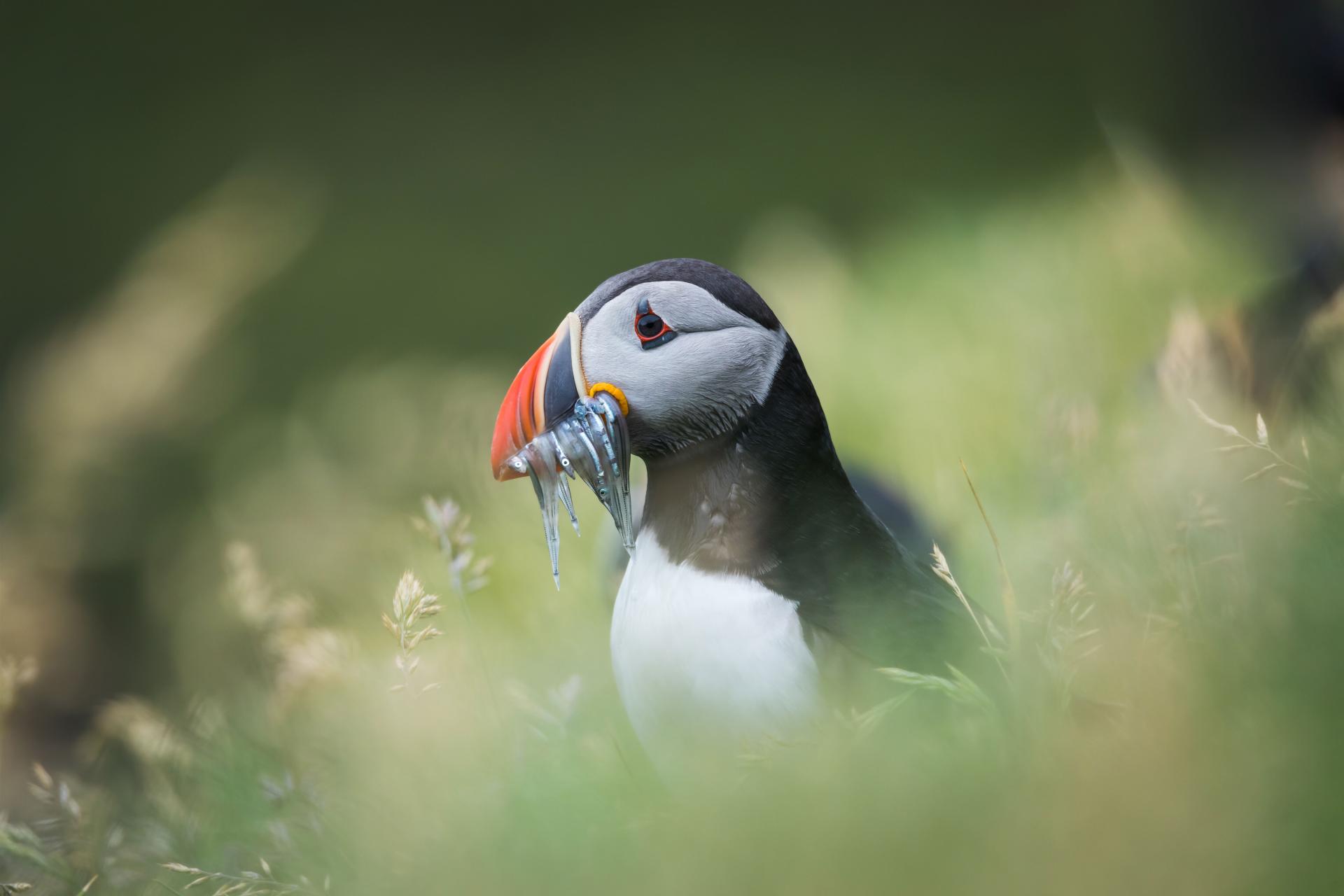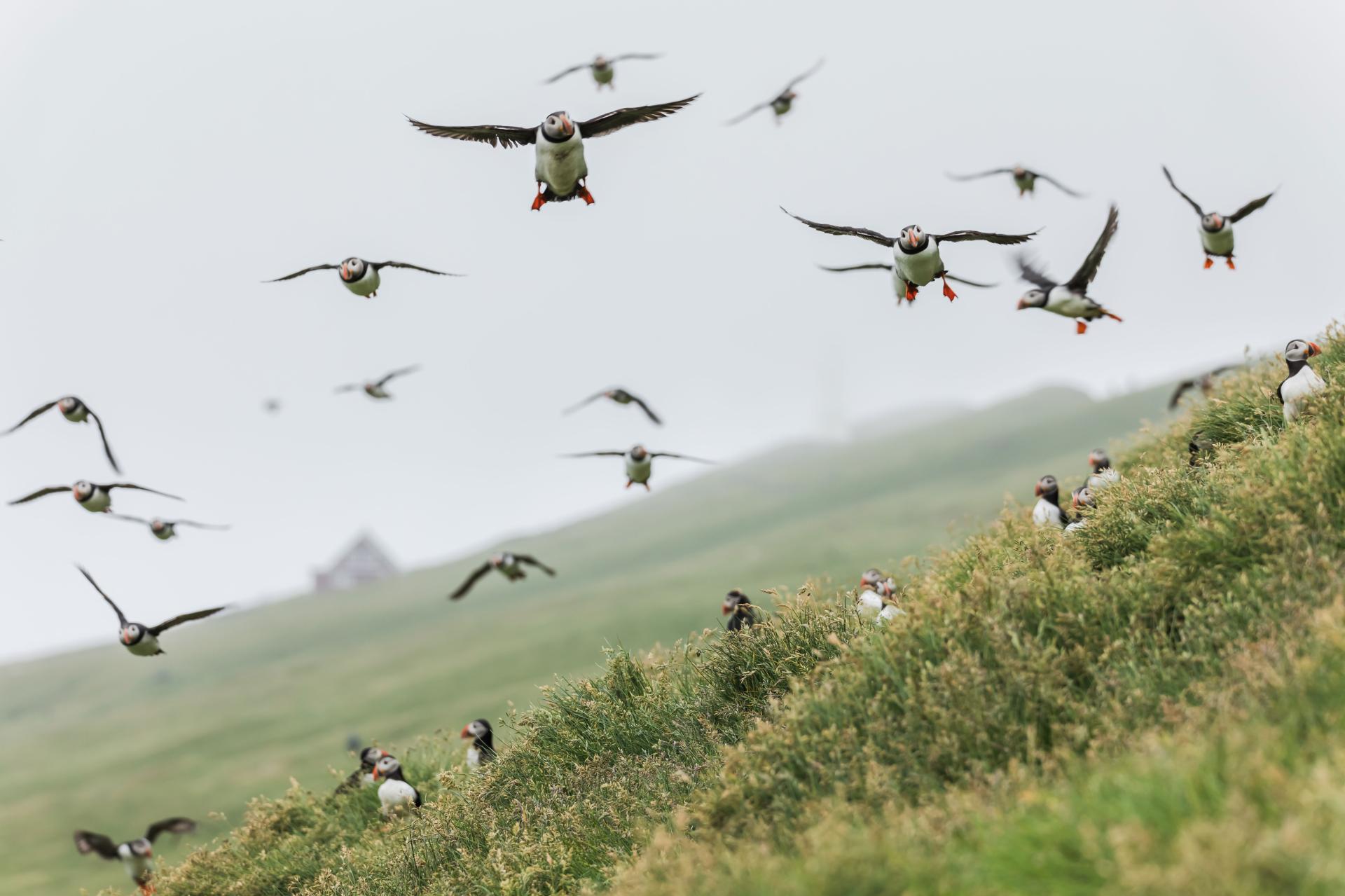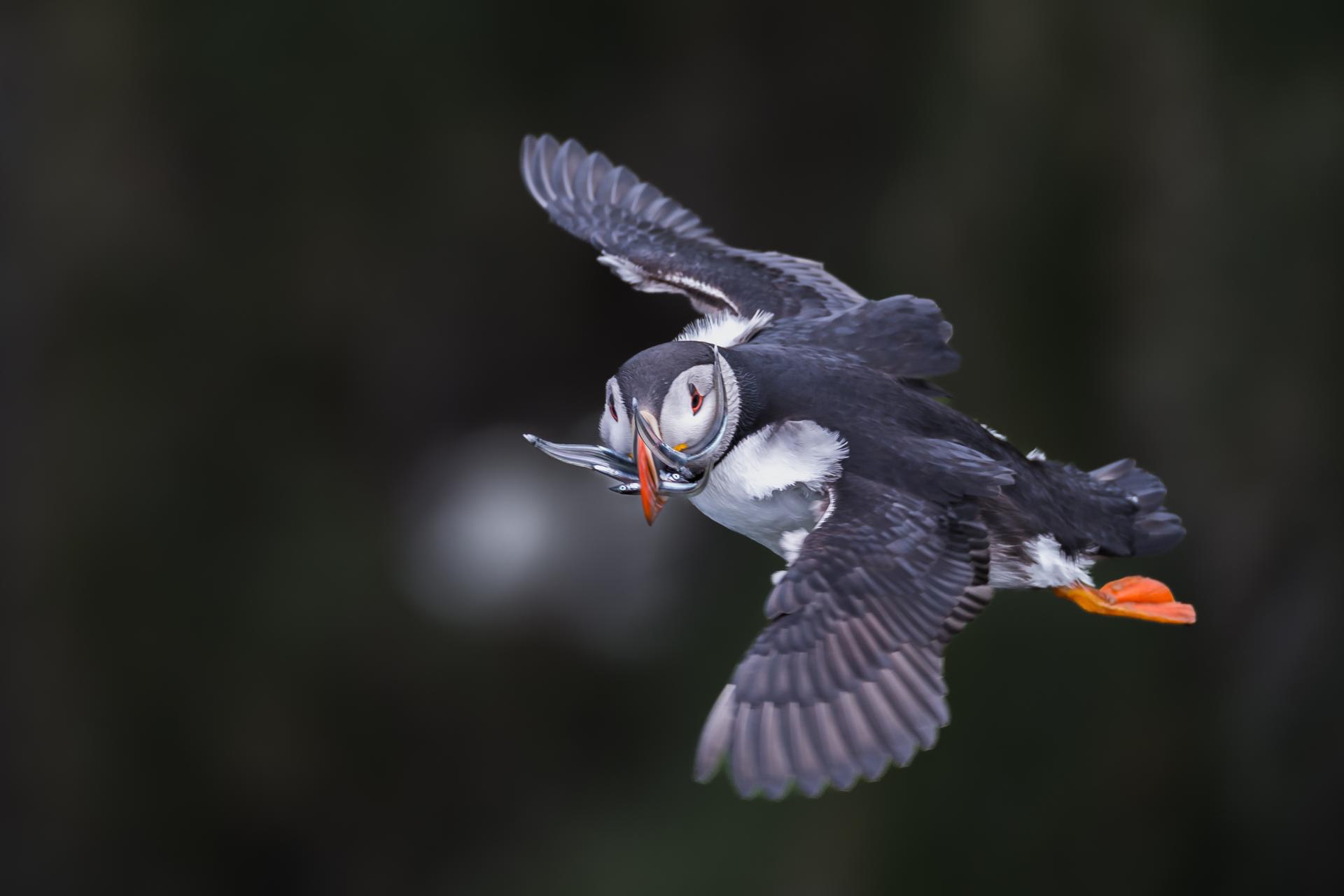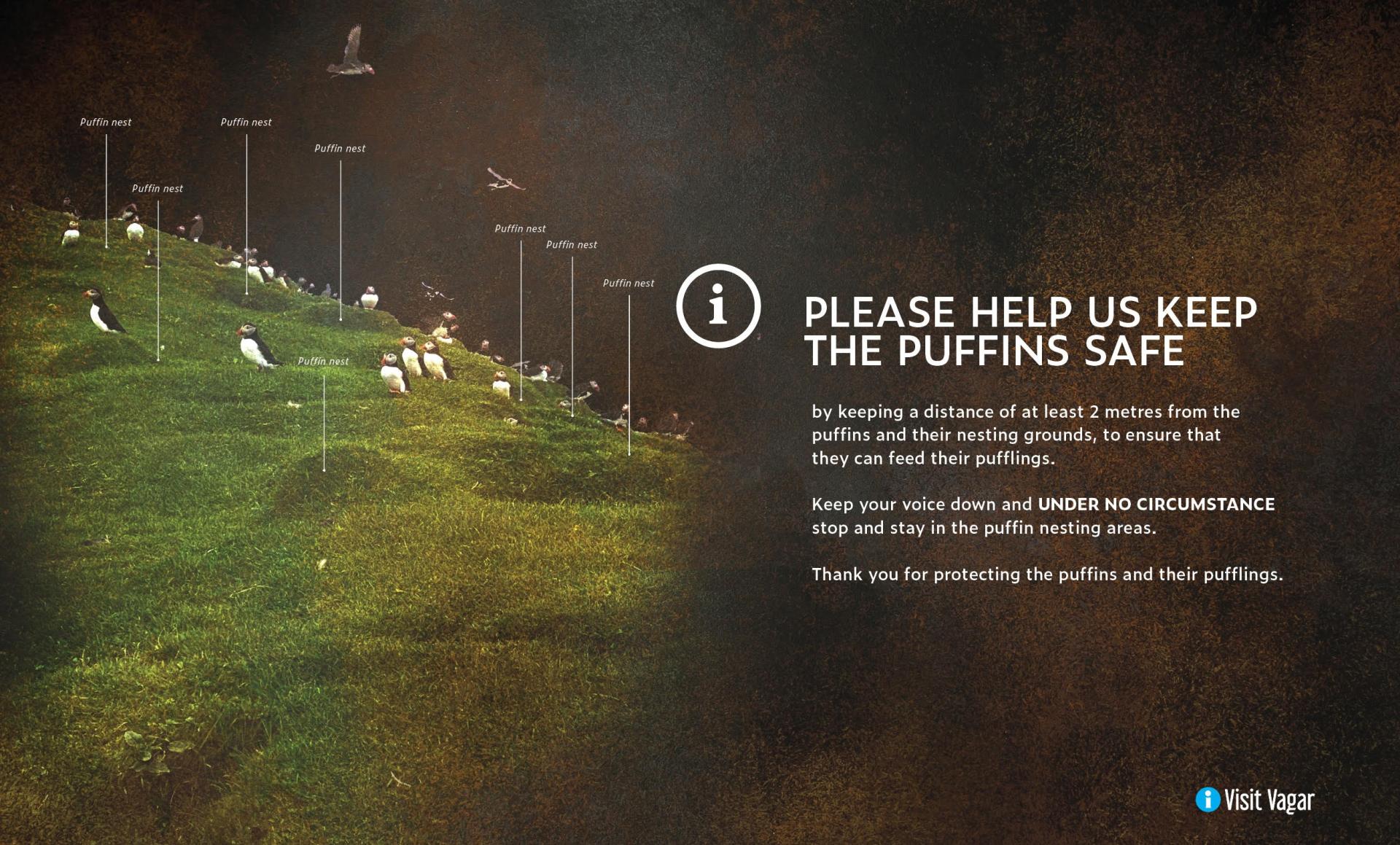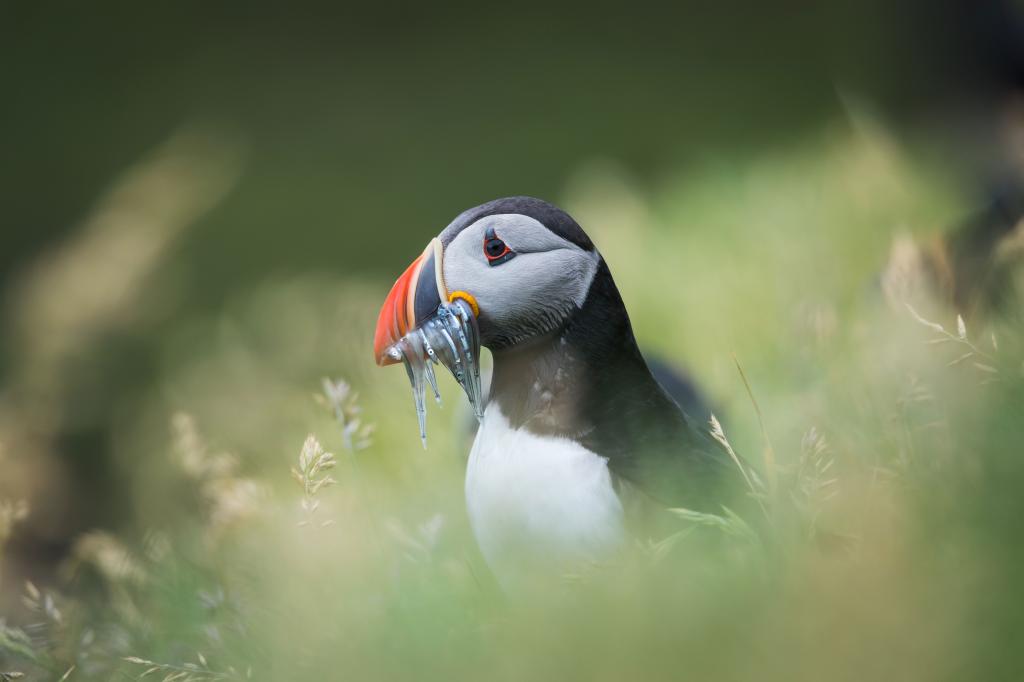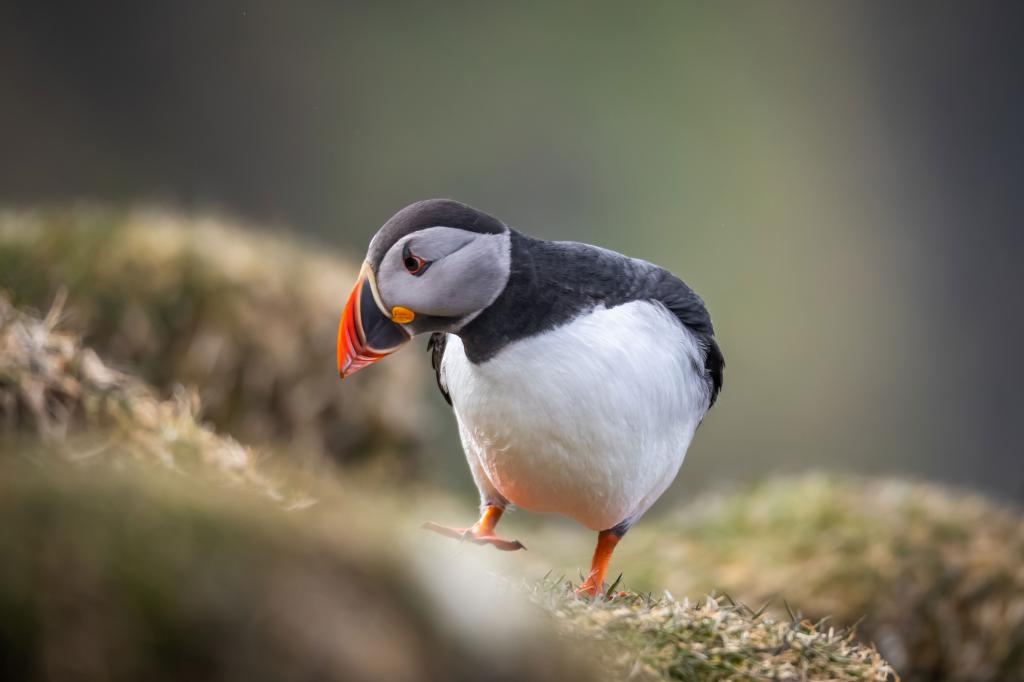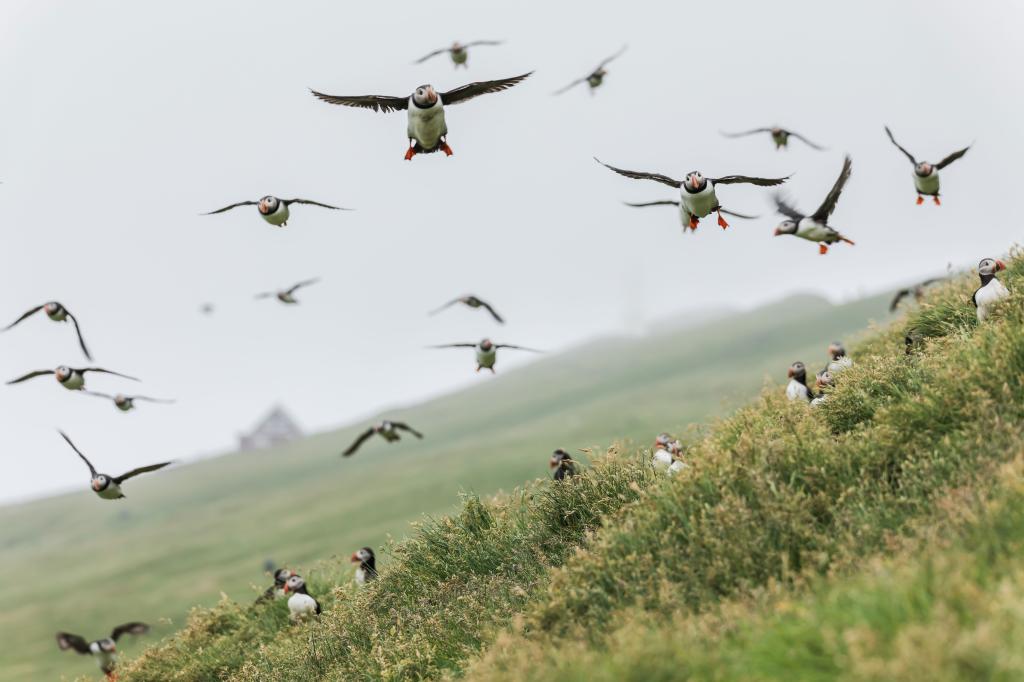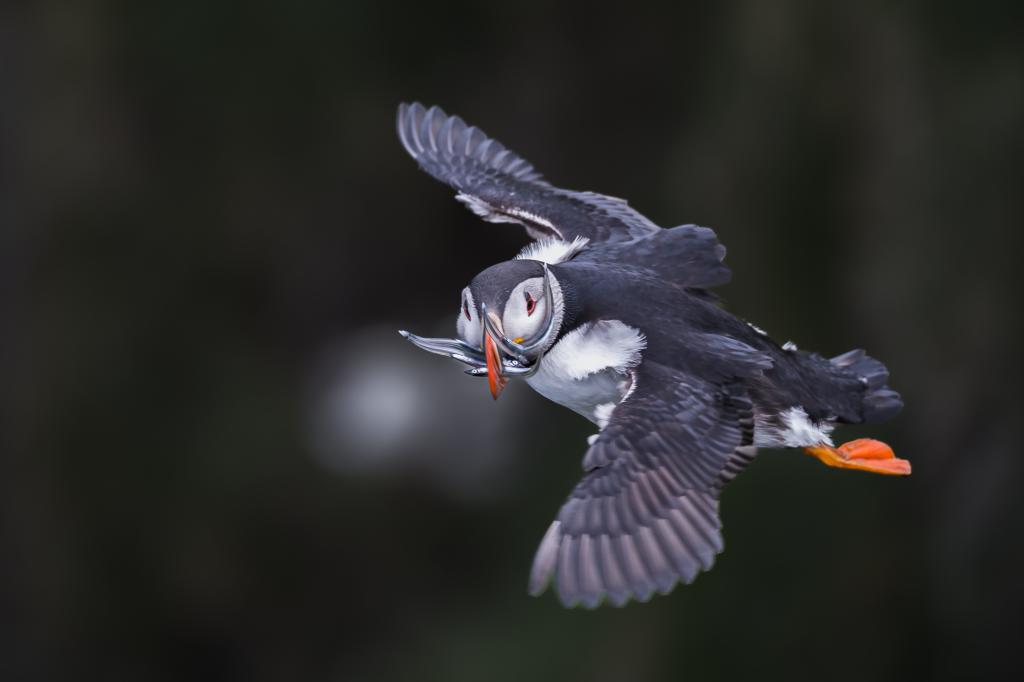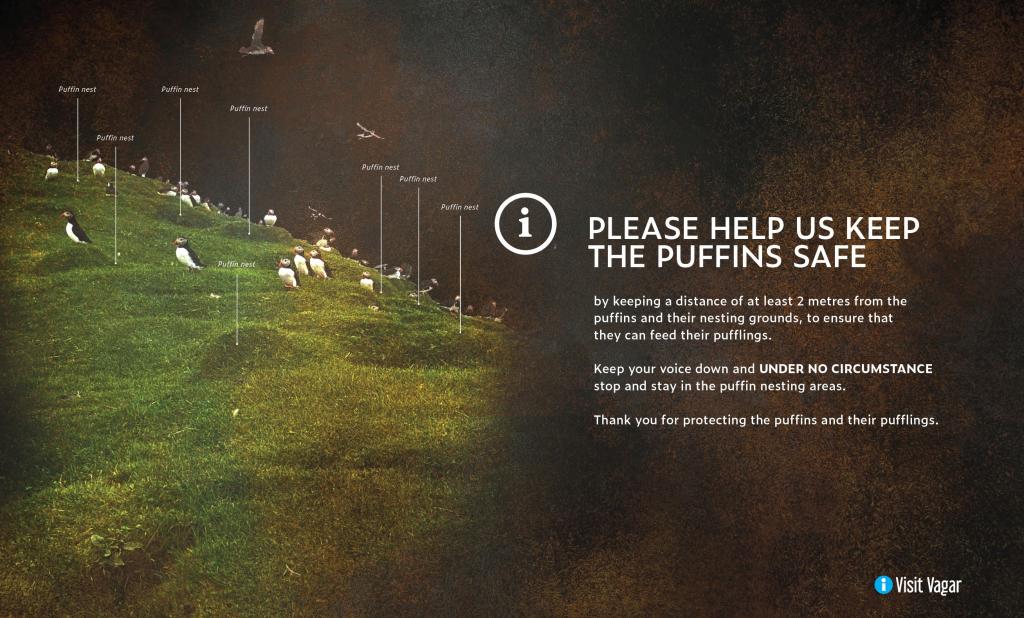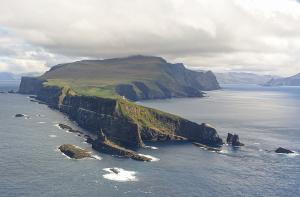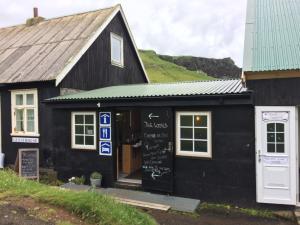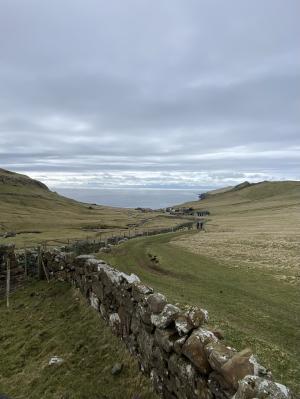Puffins and Birdwatching
For birdwatchers, Mykines is a must see when visiting the Faroe Islands. It is difficult to get closer to the birds than when walking close to large colonies of puffins and seeing cliffs filled with kittiwakes and gannets.
If it is land birds you are looking for, the moorlands of Vágar are an excellent place to start. The birdsong you hear when crossing the plains is a dead giveaway of what to expect: the songs of whimbrels, snipes and oystercatchers will catch your ears as soon as you are out in the open, along with many more.
Enter the nature with care
We love our birds, and therefore we ask that you enter nature with utmost care. Make sure you stick to the path when walking in the moorlands, and always look down to make sure you don’t step in their nests. Don’t flash into burrows and never fly drones close to nesting birds. If the birds start to hover around you, or give warning calls you are most likely getting too close to the bird’s nest. Do not try to find the nest or the young. As long as you are close to the birds, the parents are stressed, and they have less time to search for food or keep their eggs warm. So, leave the area immediately or observe the birds from a safe distance.
If you see chicks away from any apparent nests and with no adult birds around, leave the chicks alone. Never pick up eggs or chicks. It is normal for chicks to leave the nest and walk around. Do not touch the chicks, but leave the area, so the parents can provide food, etc.
Read more about the birds you are likely to find in the free Birds of the Faroe Islands booklet that you can read here.
Puffins
Puffins are the main attraction of Mykines. There are very few places where you can get this close to Puffins as the area along the southern coast of Mykines.
Puffins are seabirds, and they live on the sea. Hence, they only come to land to nest. The first puffins arrive in the Faroe Islands in the end of April / beginning of May. The first time after arrival the puffin doesn’t spend much time on land but spends time on the sea. Here the young birds find their lifelong mate, and the birds stay on sea until they are ready to nest.
If you come to the Faroe Islands in the beginning of the season (late April – beginning of June) the best option to see puffins would be at sea.
The puffins come to land
After a while at sea the puffins will start preparing their burrow. A burrow is a hole or tunnel over a meter deep in the terrain used by nesting puffins. They are found mostly in turf above cliffs, overlooking the sea. To do this the puffins come to the land in Mykines in full numbers. This is normally around mid-June.
Pufflings
When walking in areas where puffins burrow, please take care not to step too close. You should always stick to the path and refer from stopping on the path, to cause as little disruption as possible. Again, if the puffins start to hover, you are getting to close to their nests.
The Puffins nest under the ground right next to the path, it is therefore very important to know where to walk and not to linger! Making stops on the path keeps the puffins away from their pufflings, and this can lead to starvation of the pufflings.
Pufflings hatch out of the eggs in the month of July, but for the first few weeks they don’t leave the burrow. They usually leave the burrow in mid-August, but due to their poor flying skills not all of them make it to sea. By the end of August most the puffins have headed back to sea.
